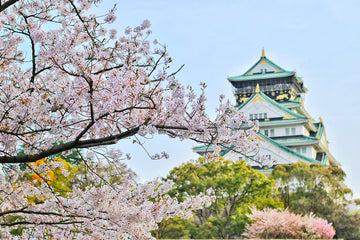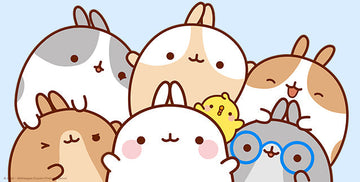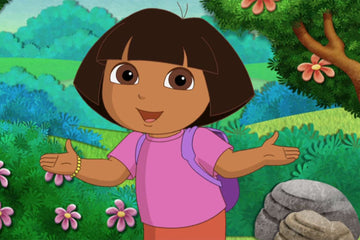Japan is a unique country with a rich history and many interesting traditions. It has a mix of ancient culture and modern technology that makes it stand out in the world.
This article shares 20 fun facts about Japan that will help kids learn more about its people, places, and customs in an easy and enjoyable way. These facts cover different areas like nature, food, and daily life, offering a broad view of what makes Japan special.
1) Japan is made up of over 6,800 islands.
Japan is an island country in East Asia made up of more than 6,800 islands. The four largest islands—Honshu, Hokkaido, Kyushu, and Shikoku—make up about 97% of Japan’s total land area.
Honshu is the biggest island and home to Tokyo, the capital city. Many smaller islands have unique cultures, natural beauty, and special attractions.
The islands stretch along the Pacific Ocean. This geography makes Japan prone to earthquakes and volcanic activity. Mount Fuji, Japan’s tallest mountain, is an active volcano located on Honshu.

2) Tokyo is the capital city of Japan.
Tokyo is the capital city of Japan and one of the largest cities in the world. It is home to over 14 million people, making it very busy and full of life.
The Greater Tokyo Area, which includes nearby towns, has about 41 million people. This makes it the most populated metro area on Earth.
Tokyo is famous for mixing old and new. It has tall skyscrapers and ancient temples side by side. This shows how the city respects its history while being very modern.
Many people visit Tokyo each year. They come to see its unique culture, technology, and famous places like the Tokyo Tower.
Cozy up your little one with the cutest styles from our Fall Outfits for Toddlers collection — perfect for leaf jumps and pumpkin patch days!
3) Mount Fuji is the highest mountain in Japan.
Mount Fuji is the tallest mountain in Japan, standing at 3,776 meters (12,389 feet). It is located on Honshu Island, near the border between Shizuoka and Yamanashi Prefectures.
This mountain is an active volcano, although it last erupted in 1707. Its shape is very symmetrical, making it easy to recognize.
Mount Fuji is a famous symbol of Japan and attracts many visitors every year. People often climb it during the summer months to watch the sunrise from the top.
The mountain is also important in Japanese culture and has inspired many works of art and stories. Its peak is sometimes covered with snow or ice, depending on the season.

4) Japan is famous for its cherry blossoms, called sakura.
Sakura are cherry blossom trees that bloom every spring in Japan. Their pink and white flowers cover the country in bright colors. People enjoy watching these flowers for their beauty and short blooming time.
Sakura are very important in Japanese culture. They appear in art, poetry, and festivals. One popular event is called hanami, where friends and families gather under the trees to enjoy the flowers.
Many places in Japan are famous for sakura. Parks like Ueno and Shinjuku Gyoen in Tokyo are popular spots. Some areas even have special night viewings called yozakura, where lanterns light up the blossoms after dark.
5) The Shinkansen is Japan's high-speed bullet train.
The Shinkansen, also known as the bullet train, is Japan’s network of high-speed trains. It started in 1964 to help people travel faster between cities.
These trains can reach speeds up to 320 kilometers per hour. This makes traveling across Japan much quicker than by car or regular train.
The Shinkansen is famous for being very on time. Trains usually arrive and leave within seconds of their scheduled time.
One type, called Hayabusa, travels from Tokyo all the way to Hokkaido in the north. It is the fastest bullet train in Japan.
The Shinkansen helped connect many parts of Japan, boosting travel and the economy in the country.
6) Baseball is a popular sport in Japan.
Baseball is one of the most popular sports in Japan. It was brought to Japan from the United States in the late 1800s. Since then, it has become a sport loved by many people across the country.
Japan has a professional baseball league with 12 teams. These teams have strong fan followings, and games often fill large stadiums. People of all ages watch and play baseball, from schools to the professional level.
High school baseball is also very important in Japan. Every summer, a big national tournament called Koshien is held that brings a lot of excitement. Baseball is valued for teaching teamwork, hard work, and discipline, which are important in Japanese culture.
7) Sushi originated in Japan and is a well-known Japanese dish.
Sushi started in Japan more than 2,000 years ago. It began as a way to preserve fish using rice and later changed into the fresh food people enjoy today.
The first sushi was called narezushi. People fermented fish with rice to keep it from spoiling. Over time, sushi evolved to include vinegared rice and fresh fish.
During the Edo period (1603-1868), nigiri sushi became popular. This type features hand-pressed rice with slices of fish. It is the kind of sushi many people know today.
Today, Japan has over 45,000 sushi restaurants. Sushi is an important part of Japanese culture and loved worldwide for its fresh taste and artful presentation.
8) Japan has the world's oldest monarchy, the Emperor of Japan.
Japan’s monarchy is the oldest continuing royal family in the world. It has lasted for more than 2,600 years. The first emperor is said to have been Emperor Jimmu, who started the line around 600 BC.
Today, the Emperor does not have political power. Instead, he is a symbol of Japan’s unity and culture. The Japanese Constitution describes the Emperor as a figure who represents the people and their history.
The monarchy is important in Japanese tradition. It connects the present with ancient stories and rituals. This long history makes Japan’s imperial family unique among the world’s royal families.
Celebrate spring in style with our Girls Easter Dress collection, featuring picture-perfect looks for twirls, smiles, and sunny memories.

9) Japan has many active volcanoes including Mount Aso.
Japan sits on the Pacific Ring of Fire, which is why it has many active volcanoes. There are 111 active volcanoes in the country, making up about 10% of the world's total.
Mount Aso is one of the largest active volcanoes in Japan. It is located on the island of Kyushu and stands 1,592 meters tall. It has a huge caldera, or crater, which is one of the biggest in the world.
Mount Aso last had a major eruption in 2021. People can visit the volcano and even drive close to its crater, making it a popular spot for tourists and scientists alike.
10) Kawaii culture, meaning cute culture, is very popular in Japan.
Kawaii culture is all about things that are cute and adorable. It began in the 1970s when young Japanese girls started drawing cute pictures and writing in a cute style. Since then, kawaii has grown to include fashion, toys, and even everyday items.
This culture is seen everywhere in Japan. From cartoon characters like Hello Kitty to colorful clothes and cute mascots representing cities, kawaii shapes what people enjoy. It even affects how products are designed, making them friendly and fun to look at.
The word "kawaii" originally meant shy or blushing but changed to mean cute over time. It shows how language can grow with culture. Today, kawaii reflects innocence and playfulness in a way that is very important in Japanese life.
11) Sumo wrestling is Japan’s national sport.
Sumo wrestling is a traditional sport that started in Japan over 1,500 years ago. It is the oldest professional sport in the country. In sumo, two wrestlers try to push each other out of a small circular ring or make the other touch the ground with any body part except the feet.
Sumo is connected to Shinto, a Japanese religion. Before matches, wrestlers throw salt into the ring to purify it. This ritual shows respect for the sport’s religious roots.
The wrestlers are called rikishi. They wear special loincloths and follow strict rules, both in and out of the ring. Sumo tournaments attract many fans and are important cultural events in Japan.
12) Japan has a unique custom of bowing as a greeting.
Bowing, called ojigi in Japanese, is a common way to say hello, thank you, or sorry. It shows respect and humility. People bow by bending at the waist, and the angle of the bow changes based on how polite or serious the situation is.
Bow depths can range from a slight nod to a deep bend. The deeper the bow, the more respect is shown. Bowing has been part of Japan’s culture for centuries, linked to the samurai tradition.
Even today, people learn how to bow correctly from a young age. Bowing is used in many places, including homes, schools, and businesses. It helps keep social harmony and shows kindness without words.
13) There are vending machines selling everything from drinks to umbrellas in Japan.
Japan has millions of vending machines across the country. They are not just for snacks or drinks. People can buy many different items from these machines.
Some vending machines sell hot meals like ramen or local dishes. Others offer unusual items such as umbrellas, eggs, or even small toys.
Umbrella vending machines are popular because of sudden rain showers. They sell disposable umbrellas that people can use and throw away later.
These machines make shopping easy and fast. They are found on streets, in stations, and many public places. This variety shows how Japan combines convenience with clever ideas.

14) Japan is known for technological innovation in robotics and electronics.
Japan is famous for its advanced technology, especially in robotics and electronics. Many companies in Japan create robots that help with daily tasks, like cleaning or delivering goods. These robots are often used in hospitals and factories.
The country is also a leader in making electronic devices. Japan produces popular video game consoles, advanced cameras, and smart gadgets. High-speed trains, called Shinkansen, are another example of Japan’s technology. They travel very fast and smoothly.
Japanese innovations often combine useful technology with new ideas. This helps Japan stay at the front of global technology, making life easier and more exciting for people worldwide.
Looking for adorable on a budget? Our Budget Friendly collection offers stylish kids’ outfits that are as easy on your wallet as they are on the eyes!
15) The country experiences frequent earthquakes due to its location in the Pacific Ring of Fire.
Japan is one of the most earthquake-prone countries in the world. This happens because it sits on the Pacific Ring of Fire, a region where several tectonic plates meet and move against each other.
These moving plates cause the ground to shake, leading to frequent earthquakes. Japan feels over 1,500 earthquakes every year, ranging from small tremors to strong, damaging ones.
This location also causes volcanic activity in Japan. The country's position makes it important for scientists to monitor earthquakes and prepare for them to keep people safe.
16) Japanese people take education very seriously.
Education is very important in Japan. Most students attend school for nine years, starting from elementary to junior high. After that, many continue to high school and college.
Japanese students often spend extra time studying. They go to after-school classes called "juku" or cram schools. These help them learn more and prepare for tests.
Schools in Japan focus on both learning and discipline. Students clean their classrooms and follow strict rules. This teaches responsibility and respect.
Teachers are highly respected in Japan. They work hard to help all students succeed. Education is seen as a key to a good future.
17) Anime and manga are internationally recognized Japanese art forms.
Anime is a style of animation that started in Japan. It covers many genres and stories for people of all ages. Manga is the comic book version of these stories and is also very popular worldwide.
Both anime and manga show many parts of Japanese culture. They include traditions, holidays, and festivals that help people learn about Japan. Today, they are considered important forms of Japanese art.
Many countries enjoy anime and manga, thanks to streaming services and translated books. This popularity has helped spread Japanese culture around the world. Some series, like One Piece, are famous for being very long and having many fans everywhere.
18) Japan has a population of around 125 million people.
Japan is home to about 125 million people. This makes it one of the most populated countries in the world. Most people live in cities like Tokyo, which is the largest city with nearly 14 million residents.
Despite its size, Japan is made up of thousands of islands. The population lives mainly on four big islands: Honshu, Hokkaido, Kyushu, and Shikoku. The country manages to balance crowded cities with quiet countryside areas.
People in Japan tend to live longer than in many other countries. The average life expectancy is about 84 years. This is higher than in many parts of the world.

19) The famous traditional garment in Japan is the kimono.
The kimono is a traditional Japanese robe that has been worn for centuries. The word "kimono" means "thing to wear" in Japanese.
It has a simple shape, like a long robe with wide sleeves. People once wore kimonos every day, but now they mostly wear them for special events like weddings or festivals.
Kimonos often have beautiful designs that show nature, seasons, or symbols. They can be made from silk or other fabrics. Each part of the kimono, like the collar or the belt called an obi, has a special meaning.
Wearing a kimono can be difficult because of all the layers and how it must be tied. Today, it remains a strong symbol of Japanese culture and tradition.
20) Japanese gardens are designed to reflect natural landscapes in mini form.
Japanese gardens are made to look like small versions of nature. They use plants, rocks, water, and sometimes sand to copy real mountains, rivers, and forests. The goal is to create a peaceful place that feels like the outside world.
Water often represents life and renewal in these gardens. Stones can stand for mountains, and paths guide visitors through the space like natural trails.
These gardens also focus on balance and harmony. Every element is carefully placed to make the garden calm and beautiful, showing a deep respect for nature.
A Journey Through Japan Starts with Wonder
Exploring these 20 fun facts about Japan is just the beginning of an exciting cultural adventure for kids. From unique traditions to fascinating foods, Japan offers endless opportunities to spark curiosity and inspire young minds to learn more. Whether you're planning a trip or just fueling a child's imagination from home, remember — learning about the world starts with one fun fact at a time!.
For more kid-friendly content, educational guides, and adorable outfits inspired by curiosity and creativity, visit SandilakeClothing.com .





